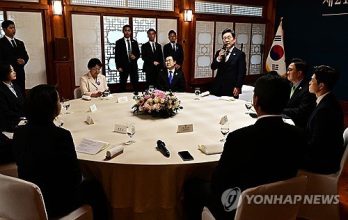Similar to South Koreans, parents in North Korea are dependent on pre-school institutions such as kindergartens for their children. North Korean men usually go to work that is given to them by the regime. They have to work every single day to make money, approximately 3,500~5000 won per month plus 1 kilogram of rice. On the other hand, mothers do not have the duty to go to work. However, they need to farm or run a business in order to take care of their children because 1 kilogram of rice is not enough to feed their family for a month.
For this reason, they need some institutions to take care of their children and the North Korean government provides two types of institutions: Tac-Aso (daycare house) and kindergartens. There are one or two daycare houses and kindergartens in a district (dong).
Children between one and four-year-old go to a daycare house in which they learn basic manners such as the way of using a spoon or how to greet in front of adults. For instance, children learn how to respect elders by saluting loudly in respectful tones standing in front of the Kim families’ portraits on the wall.
The quality of daycare houses depends on the region. Outdated and poor daycare houses are usually in suburbs; the quality of facilities is way better in cities like the capital Pyongyang. One of the best day care houses is “Kim Jung-suk daycare house” in Pyongyang. Especially, the North Korean government has paid attention to it since the name of the daycare house is Kim Jung-suk, the first leader Kim Il-sung’s wife. Furthermore, the regime is keen to show foreign tourists that North Korea is a so-called “paradise on earth”, which is one of the reasons why children at Kim Jung-suk daycare house are treated well compared to others in suburbs.
Children at five and six go to kindergartens. The curriculum of a kindergarten is divided into a low-class and a high-class that takes a year respectively. The high-class belongs to compulsory education that is comprised of 12 years in North Korea. For example, compulsory education is divided into three levels: a high-class of kindergarten, 5 years of elementary school, three years of junior middle school and three years of senior middle school. One of the fanciest kindergartens is “Changgwang kindergarten”, attended by children from rich families. Not surprisingly, it is also located somewhere in Pyongyang.
Pre-school institutions in North Korea are all public. Kindergartens provide children with curriculum according to the education code from the authority. Children learn about Korean, dance, math, drawing, music; moreover, they study the life of Kim Il-Sung, Kim Jung-suk, Kim Jung-un through which they can form their emotion before attending elementary school.
People who want to work at a daycare house or a kindergarten should attend college. The course of education takes three years. This is different from South Korea where people have to pass a test as well as have a certificate in order to work.
By Lee Jeong Cheol





